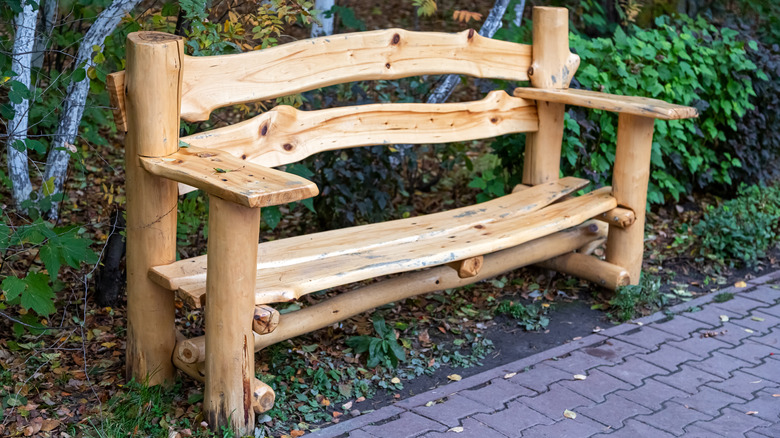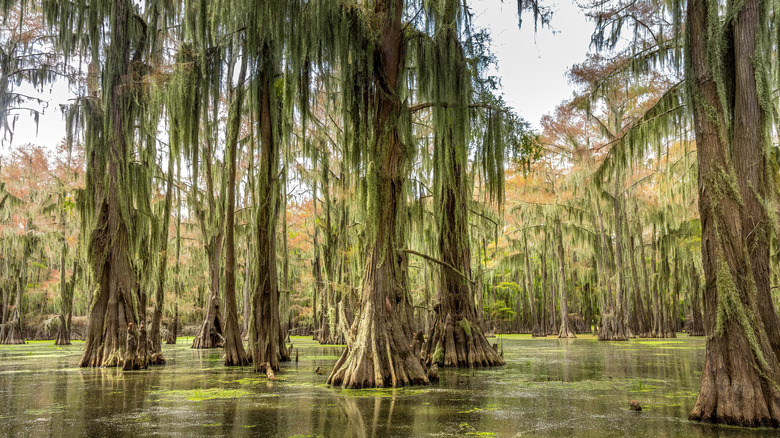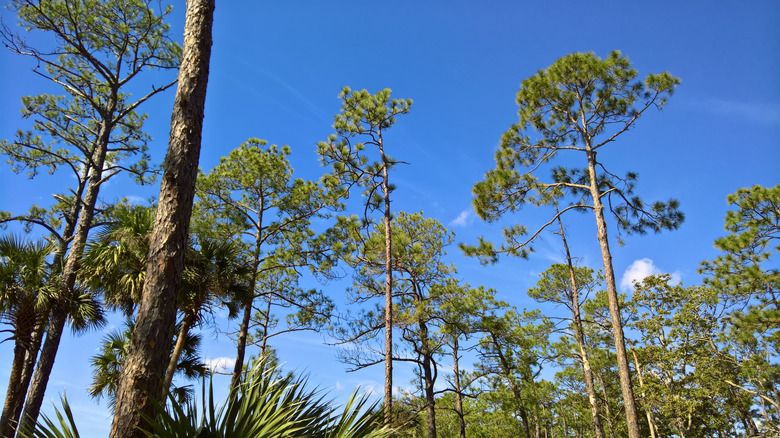You're Using The Wrong Wood For Outdoor Projects. Here's What To Use Instead
Some of the most popular DIY projects are outdoor furniture designs like the ubiquitous Adirondack chair. But what species of wood should a DIYer use if they've got outdoor projects on their mind? Drawing on my decades of experience as a professional woodworker, I'll offer three for your consideration.
The most common answer is western red cedar, or simply cedar. But while old growth western red cedar is highly resistant to rot, second or third growth cedar that you commonly find in big box stores has a reputation for being much less resistant, so I would avoid it. Instead, my first recommendation is white oak.
A common species in nearly all the states east of the Mississippi River, white oak is available in lumber yards all over the country. A highly versatile wood, you may be more familiar of its use in craftsman-style furniture — it was the species of choice for Gustaf Stickley, the famous furniture designer. White oak is a distinctive species from the more common red oak, and is used in everything from shipping pallets, to flooring, to barrels, to fine furniture. It is highly resistant to rot, and is a dense wood that works easily with power tools. Its grain figure is beautiful and lends itself to finish with an outdoor oil. One downside to white oak is that it is seldom sold as dimensional lumber: 2 x 4s, 1 x 10s and so on. That means you will need to cut it into those various sizes. The next two species I recommend do not have that drawback.
After white oak, cypress is also an excellent choice for outdoor furniture
While white oak is the best option for outdoor furniture, cypress is another excellent choice, from its rot resistance to its coloration. While white oak is a hardwood, cypress (like cedar) is a softwood.
Cypress trees are evergreen with needles rather than leaves and live in swampy areas where they have plenty of water and highly fertile surroundings. The heartwood (the inner core of a tree) is a creamy white color with the sapwood, the newest wood on the outside bole of the tree, has a yellowish color. As a softwood it is much less dense than say, white oak, but is still quite durable when used in outdoor furniture. It takes stains well and if left unfinished will weather to a lovely dove gray color. Cypress is most common on the Atlantic coast, going all the way from Delaware, around the Gulf of Mexico and even into Mexico. There is also a species of it on the norther coast of California. Its geographical restrictions means that it is not common in some parts of the country, but where it is common, it is highly available. That means it is often quite affordable.
Long Leaf Pine also makes great wood for outdoor furniture
My third and final recommendation for you is long leaf pine. This is something of a confusing name as it does not have leaves, but it does have very long pine needles. Most folks would not consider pine a very durable outdoor species, much less one that's great for outdoor furniture, but long leaf pine is an exception to that truism.
Long leaf is also exceptional in a number of other ways: For one, it is the only pine tree that grows a tap root. That tap root makes it stands up to storms and hurricanes better than any other species of pine. As it grows mostly along the southern coasts of America, that characteristic pays benefits in spades. It grows very tall and with exceptionally straight grain; additionally, its resinous heartwood is resistant to rot.
An important note is that while long leaf pine is considered one of the southern yellow pines, not all southern yellow pines are long leaf, and won't have the same rot resistant qualities. Curiously, its specific density (hardness) is closer to that of hardwoods than softwoods. Speaking from professional experience, I'll say that long leaf pine is a pleasure to work with, machines well, and has an intense aromatic quality. It has orange annual latewood rings and a lighter yellow earlywood which, when finished, are lovely to look at. Of the three species here, this one will be the most challenging to purchase, but it is well worth the effort to find it and buy it.


